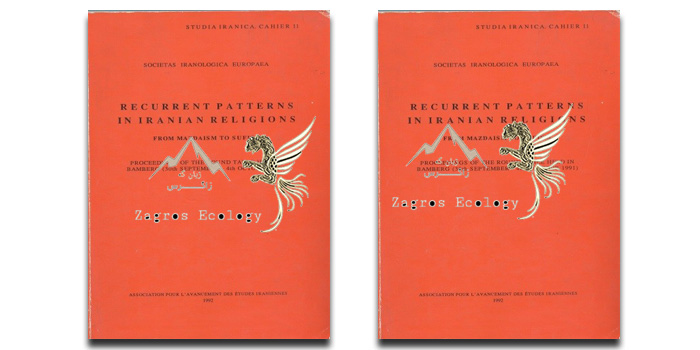book introduction
Recurrent Patterns in Iranian Religions from Mazdaism to Sufism
Fariborz R. Hamzeh’ee, Structural and Organizational Analogies between Mazdaism and Sufism and the Kurdish Religions, Ph. Gignoux (ed.), Recurrent Patterns in Iranian Religions from Mazdaism to Sufism, Proceedings of the Round Table held in Bamberg (30th September-4th October 1991), Societas Iranologica Europaea, Religions from Mazdaism to Sufism, Association pour des l’avancement ‘etudes iraniennes: Studia Iranica, Cahier 11, Paris, 1992.
Book Reviw:The Journal of the American Oriental Society, Apr. 1, 1999.
Recurrent Patterns in Iranian Religions
Despite general belief, most of the ideas are not invented by certain persons. This is a methodological suggestion regarding the possible continuation of mystical thoughts and ideas in the Orient. The relation between Mazdaism and Sufism is a subject which is frequently discussed. But unfortunately we still do not have a clear picture of this relation. Among different ways helping us to reach a better understanding of this relation, one may be through the study of Kurdish religious groups which could be extended to some other religious groups in the region.
from Mazdaism to Sufism
There exist several evidences indicating relation between the above mentioned religions and Sufism. For example the Yazidi consider a Sufi called Shaikh ‘Adi to have been the founder of their religion. According to Wigrams “there seems some historical evidence that he lived in the tenth century, and that he was originally a Magian who had fled from Aleppo when the Magian cult was suppressed”. But it is not only this. We can mention only some contact points among many others.
Philippe Gignoux (ed.): Recurrent patterns in Iranian religions: from Mazdaism to Sufism.
The most important among them is that at present there is a very close ideological and organizational affiliation between the Yaresan and the Khaksar dervish order. It is still not known when this relation has started. We can suppose that either ideological closeness has brought them together, or due to some other factors, organizational connection was created and in the course of time, both have borrowed ideas from each other. Another possibility to be taken into consideration is that they both have been started together and have gone through different developments.
philip-g-kreyenbroek, “YAZIDIS ii. INITIATION IN YAZIDISM,” Encyclopædia Iranica, online edition, 2005

 فارسی
فارسی
